CANVASSING
Sometimes referred to as door-knocking, canvassing involves going door-to-door to inform and organize community members to take an action.
Downloadable measurement templates
Below is a template of common measures organizations use in the parent empowerment space to manage canvassing.
As a reminder, your organization should 'Goldilocks' what it measures. You should only capture measures that help your organization make better decisions to increase its impact (and is practical to collect).
Canvassing Measures for Collective Voice - Issue Campaigns to change policy by influencing the decision-making of those in a position of authority.
Canvassing Measures for Vote - Electoral Campaigns to change policy by (a) supporting individuals to get elected (or re-elected) to a position of authority in order to make those changes, or (b) through a publicly decided ballot or proposition.
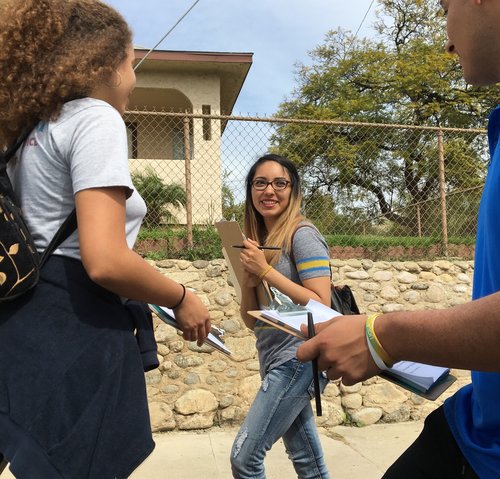
The objectives of canvassing can include informing and organizing individuals to:
- Sign-up for an ongoing relationship with an organization.
- Sign a petition.
- Commit to attending an event, workshop or training.
- Commit to participating in a public action.
- Register to vote (note, this can be done as a 501(c)3 nonprofit as long as it is done in a non-partisan manner).
- Get-out-the-vote (note, this can also be done as a 501(c)3 nonprofit as long as it is done in a non-partisan manner). In a 2002 study, Yale professors Donald Green and Alan Gerber found that face-to-face contact raised turnout by 7% to 12% among those who were contacted.
- Vote for a specific candidate or initiative on a ballot, or advocate for a specific piece of legislation (note, this action can only be done through the work of a 501(c)4 nonprofit and not a 501(c)3).
- Give money (if it is to a nonprofit, this can be done through 501(c)3 work. For a candidate or initiative on a ballot, this requires working as a 501(c)4).
If your organization is considering ANY 501(c)4 political activity, you should first consult knowledgeable legal counsel for formal guidance on your plan of action, legal structure, financial reporting, etc.
Keys to effective canvassing
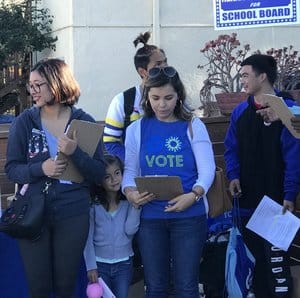
- Canvassing is not just about the number of people who are reached - it is about targeting the RIGHT people to reach in a campaign. Finding and targeting individuals who have the ability to exercise power in support of your campaign is crucial for both effectiveness (reaching the right members of a community) and efficiency (not spending scarce resources of time, talent and money in conversation with people who are unlikely or unable to support your campaign).
- Canvassing is also about the quality of your engagement with the people you reach. People respond to what and who they can relate to. Engaging people in canvassing is therefore about how to quickly build a relationship with someone and create connections between what matters to them and the campaign agenda that matters to you.
As a 2017 article from Vox explains (within the context of electoral campaigns), “Given the widely acknowledged importance of a good ‘ground game,’ campaigns like to tout statistics that show they’re knocking on huge numbers of doors. These statistics can make their ground games sound quite substantial. But, in reality, large ‘knock’ numbers often conceal lackluster ground games. Why? Campaign operatives often rush through neighborhoods, hurrying to rack up impressive numbers of ‘knocks.’ However, these hurried efforts often fail to reach most voters at all and entail only perfunctory interactions with the voters they do. Campaigns’ ground games can thus sound sizable in terms of "knocks" when they haven’t had any conversations with voters at all.”
In contrast, “to actually affect voters, research shows that having an actual conversation is crucial. Canvassing seems to work best when voters who don’t care much about politics engage in a genuine conversation about why voting is important. So, when canvassers rush through scripted interactions, just trying to cram their message into voters’ minds, the impacts they leave are minimal — voters might as well have been sitting through a television ad. On the other hand, research has consistently found that authentic interpersonal exchanges usually have sizable impacts.”
From a measurement perspective, this speaks to the importance of not just measuring how many people are reached and engaged with (an output), but what changes or benefits (outcomes) resulted from that reach/engagement.
"The cornerstone of effective canvassing is constant and dynamic training. We focus on supporting our members to tell their story at the door and share how our issue or candidate will matter for everyday life in the community. Having that conversation face-to-face makes people realize how critical their voice is and why we need them to join us.”
— Christian Esperias
National Director of Campaign Strategy
SFER Action Network
- Quality engagement means investing in training and tools. Christian Esperias, the National Director of Campaign Strategy at SFER Action Network, counsels: "The cornerstone of effective canvassing is constant and dynamic training. We focus on supporting our members to tell their story at the door and share how our issue or candidate will matter for every day life in the community. Having that conversation face-to-face makes people realize how critical their voice is and why we need them to join us."
- Be crystal clear on the specific ask(s) being made during canvassing.
- Provide a script that allows canvassers to quickly connect with the people they are speaking to and allows them to know how to respond to various questions and comments people are likely to have.
- Ground that script in tested messaging, and where possible use polling, focus groups, or even A/B testing (trying different options with different audiences when there is a large number of people being contacted) to understand what messaging is most effective.
- Provide training and coaching to canvassers to increase their ability to execute and demonstrate your commitment to them. In the beginning, practice 'I do, we do, you do' to help ease canvassers into this work and help them understand what is effective.
Canvassing is asking a lot of people — speaking with total strangers can be challenging! Organizations can make it easier by doing the following to support its canvassers:
“Canvassing (and phone banking) is an exercise in sharing the "why" for volunteers. Why do they feel urgency about the fairness of the education system? Why do they need other people to act on behalf of children? Why are they volunteering? Inside, we all know our ‘why’ when we show up to volunteer at something. Talking to a stranger challenges us to express our values in a way that is clear and that motivates the other people to action. Once we know how to do that, when we've found our words and our story on our issue, we can be effective leaders and advocates.”
— Seth Litt
Executive Director
Parent Revolution
- Provide some flexibility to allow canvassers to own their messaging so they can make it personal. One leader shared that within their script, there are options on talking points so that canvassers can, “select the message that most resonates with them, so their enthusiasm will translate to the person they are speaking with.”
Seth Litt, Executive Director of Parent Revolution, counsels, “Canvassing (and phone banking) is an exercise in sharing the "why" for volunteers. Why do they feel urgency about the fairness of the education system? Why do they need other people to act on behalf of children? Why are they volunteering? Inside, we all know our ‘why’ when we show up to volunteer at something. Talking to a stranger challenges us to express our values in a way that is clear and that motivates the other people to action. Once we know how to do that, when we've found our words and our story on our issue, we can be effective leaders and advocates.”
- Not everyone who signs up for canvassing shows up, so plan accordingly for what is known as the 'flake-factor.' An organization can counteract the flake-factor by: (a) building strong relationships with parents and ensuring parent leaders have strong relationships with other parents; (b) being diligent in your follow-up to remind people; (c) making canvassing feel like a group effort that builds collective responsibility to one another; and (d) reducing barriers to participation (e.g., matching a person to their local geography to minimize travel or matching a person to the day of week and/or time of day that they are available).
- The geographic context of canvassing matters. Population density can impact how much effort is required to reach your target number of people. Dense urban areas are easier to cover on foot, especially apartment buildings. Suburban or rural areas require cars and a different expectation of people reached per hour.
- The number of doors knocked does not equal the number of people reached. In planning a canvassing action, the ratio of doors knocked to people reached can range from 4-to-1 to 10-to-1.
- The time of day and day of week when canvassing occurs matters. Canvassing is literally meeting people where they live, so knowing when people are likely to be home matters greatly in reaching them.
- Canvassing can be done in pairs or individually. Some organizations suggest canvassing in pairs for safety and training purposes - usually pairing a more experienced canvasser with someone newer to the action. Others design canvassing to be done individually. And still other organizations split the difference, with organizers working opposite sides of the street to cover more turf while providing some security and the option of a more experienced canvasser to support their colleague.
- Technology can enable more efficient, effective canvassing and provides crucial back-end information and analytics. Applications and platforms have emerged that help organize and optimize canvassing, and integrate canvassing data with other data about individuals, including their demographics, voting habits, and existing relationship with your organization.
- Tracking unique identifiers (using technology) for individuals enables your organization to measure in after-action analysis whether and where canvassing was effective in reaching the right individuals and if it resulted in them taking action — particularly voting.
- Make canvassing easy and (where possible) fun so people do well, like the work, and return. Canvassing is work. Knocking on a stranger’s door and talking to people who may disagree with you is hard. Provide refreshments. Make it friendly competition between canvassers with leaderboards and ways of acknowledging success. This also helps you identify who is a really good canvasser and could be a good trainer/leader of canvassing actions for your current or future campaigns.
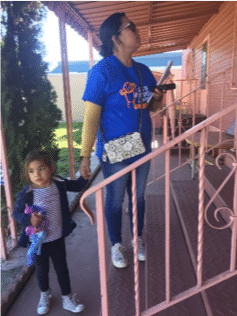
“Your best asset is a returning volunteer,” observes one leader. “They don’t need to be trained so they can jump right in, and the more you phone bank or canvass the better you get. Anything you can do to make the experience fun, make people feel appreciated, and make people feel that they are doing something that matters will greatly improve your outcomes over time.”
- Debrief for constant learning. After a canvassing session, debrief with canvassers to help them process their experience, and identify and share strong practices around messaging and approach that will make future canvassing efforts more effective.
- Always thank people for participating in canvassing.
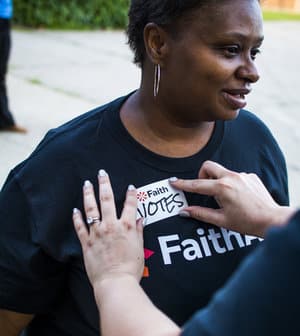
Particularly for electoral campaigns:
- Electoral work promoting a candidate or advocating for a specific piece of legislation must be done under the auspices of a 501(c)4 nonprofit, not through a 501(c)3 nonprofit (though voter registration and generic get-out-the-vote CAN be done by a 501(c)3).
- When canvassing occurs in an election cycle matters. Research indicates that individuals are less persuadable the closer you get to an election date.
- Canvassing is particularly effective in catalyzing action by voters who agree with your candidate or issue but are unlikely to actually turnout and vote. For example, a 2017 independent analysis showed that voters contacted by SFER Action Network were 15%-20% more likely to vote.
- Lastly, do not put printed material into mailboxes. This is against federal law. Information left hanging on doors is allowable.
The math of canvassing
Each organization should set canvassing targets based on a range of variables such as local context, its impact agenda, mapping local power, the organization’s infrastructure, etc. (refer to the section on target-setting for more detail).
There are some fundamentals to quantifying a canvassing action included in the downloadable canvassing calculator below.
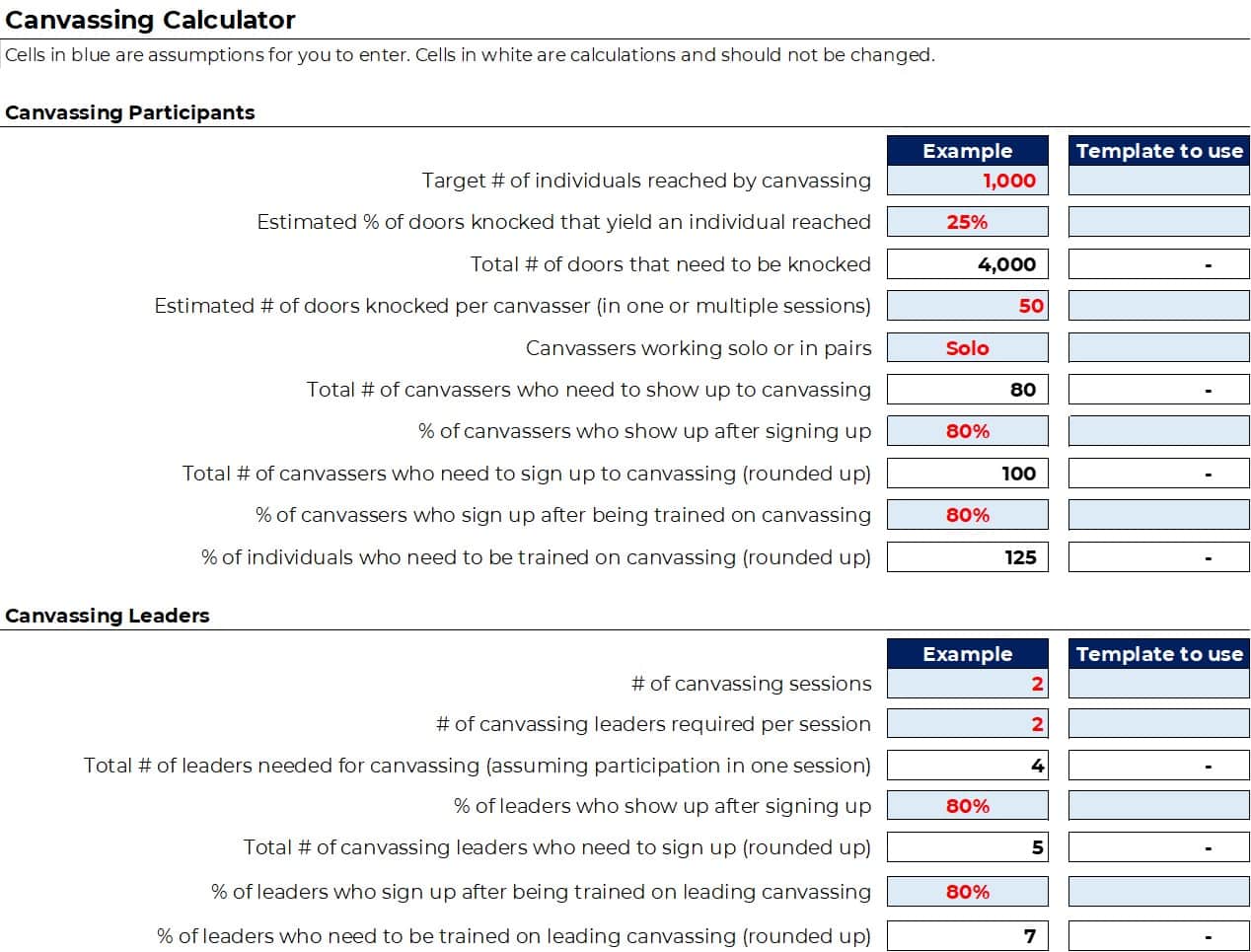

225 Franklin Street, Suite 350
Boston, MA 02110
617.912.8800
This work is licensed under a Creative Commons Attribution-NonCommercial-ShareAlike 2.0 License (CC BY-NC-SA 2.0)
Click Here to learn more.
